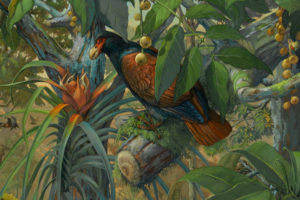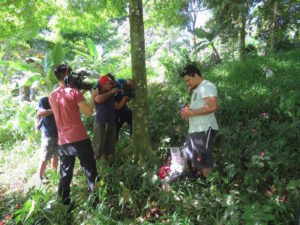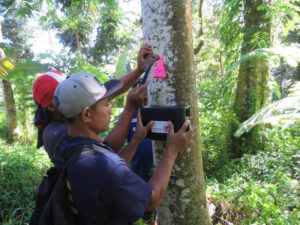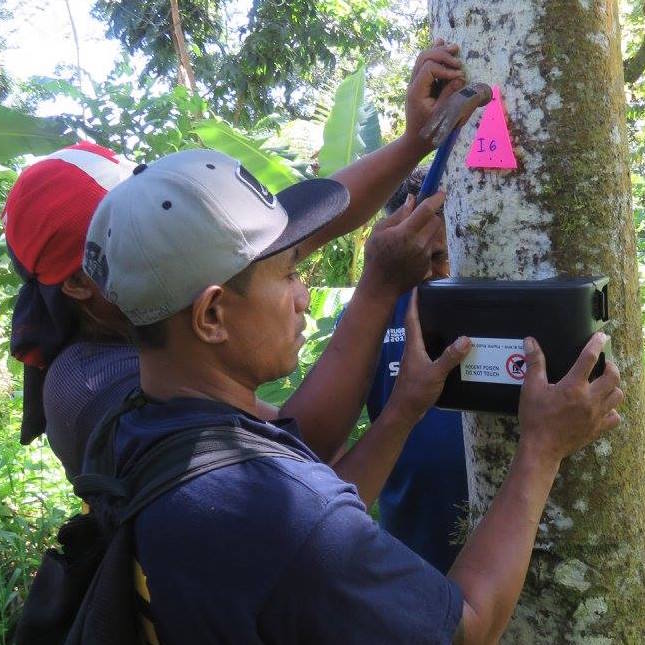
Conservation in Partnership
PelGar has been active with a new Conservation in Partnership (CiP) initiative, this time across the world on the island of Samoa. The aim of CiP is to work with local communities and conservation schemes to protect native species from rodent infestations which can have an impact on the breeding and development of wildlife populations.
Previously PelGar’s CiP projects have included a rodent eradication exercise on the Isles of Scilly, to help protect important seabird colonies, and supporting the Enhancing the Halo project in New Zealand which aimed at ensuring back yards were safe havens for native wildlife.
Gerwyn Jones, Asia Pacific Manager for PelGar International, outlines the details of this latest project in Samoa.

Manama, c Rothmans 2013
The Manumea, is known as the “Little Dodo” because it is the closest relative to the Dodo which became extinct some 400 years ago. This unique tooth-billed pigeon, is only found in Samoa, but there are now estimated to be less than a few hundred birds left.
“The plight of Samoa’s national bird was recently exposed in a powerful story produced by BBC World News with its global audience of 99 million viewers. This has certainly helped to raise awareness of the problem and the work we are involved in to reverse the decline of this endangered bird,” said Gerwyn.
The Manumea is classified as “Critically Endangered” by the International Union for Conservation of Nature (IUCN), the global body that assesses the risk of extinction of species. A Critically Endangered species is one facing a very high risk of extinction in the wild and it is the highest risk category assigned by the IUCN Red List for wild species. Every day Samoans see the Manumea on 20 tala notes and 50 sene coins but soon this could be the only record left of Samoa’s beloved national symbol.
“The bird is threatened by habitat loss, invasive species, especially cats and rats, as well as hunting,” explains Gerwyn. “And unfortunately, the Manumea is often mistakenly shot by hunters targeting Lupe (Pacific pigeon), even though all forms of hunting of native birds and bats is illegal in Samoa.”

Filming the bait box placement

Rat bait box placement
The Samoa Conservation Society (SCS) has therefore recently teamed up with Auckland Zoo, Samoa’s Ministry of Natural Resources and Environment (MNRE) and PelGar to try and save the Manumea before it is too late.
Conservation of the Manumea is complicated by it being a secretive bird and the fact that its bird song can be mimicked by the Pacific pigeon making positive identification and sighting of the bird very tricky.
To help conserve the remaining population of Manumea, SCS and MNRE are working together with the Auckland Zoo and engaging with local communities where Manumea is found. Other partners include Flinch Marketing from New Zealand who have developed a National Manumea Protection Campaign to raise awareness and help to reduce the impact of hunting on native birds and to protect the forest habitat.
Work is being done to establish rainforest conservation areas on both Upolu and Savaii as well as the management of rats at the Malololelei forest reserve on Upolu.
PelGar International’s role in the project is in supplying the rodent bait stations and ROBAN rodenticide blocks.” We are delighted that ROBAN has been chosen for such an important conservation project, and this is the first time this rodent bait has ever been used in Samoa.”
The reason why ROBAN (difenacoum) was used is due to the lower risk of secondary poisoning compared to other baits containing brodifacoum and flocoumafen.
The conservation activities are supported by grants from the UK Darwin Initiative through the Australian National University and from the NZ Government’s Pacific Development and Conservation Trust.
This CiP project is currently in the early stages, watch out for updates and more information in future issues.

